Join us at the 2025 AAHP/ABHP Awards Luncheon in Madison!
Celebrate this year’s honorees with us during the HPS Annual Meeting.Awards
Inspiring Greatness
AAHP's distinguished membership honors the extraordinary achievements of active, emeritus and inactive CHPs in health physics.
These exceptional professionals have inspired excellence, serving as role models for future generations while creating a lasting impact in the field.
Congratulations to our Class of 2025
Honoring
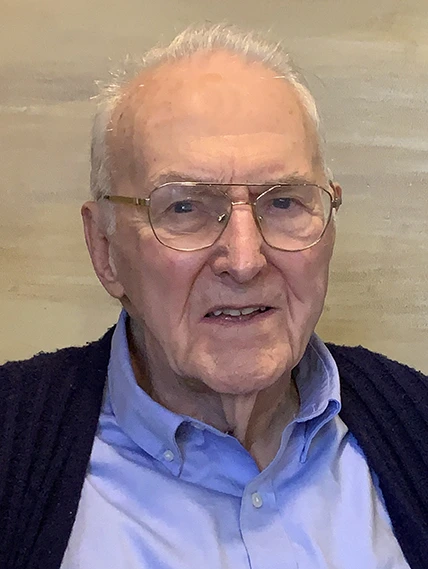
Charles Roessler, CHP
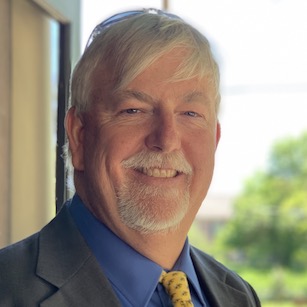
Kyle Kleinhans, CHP
Honoring posthumously
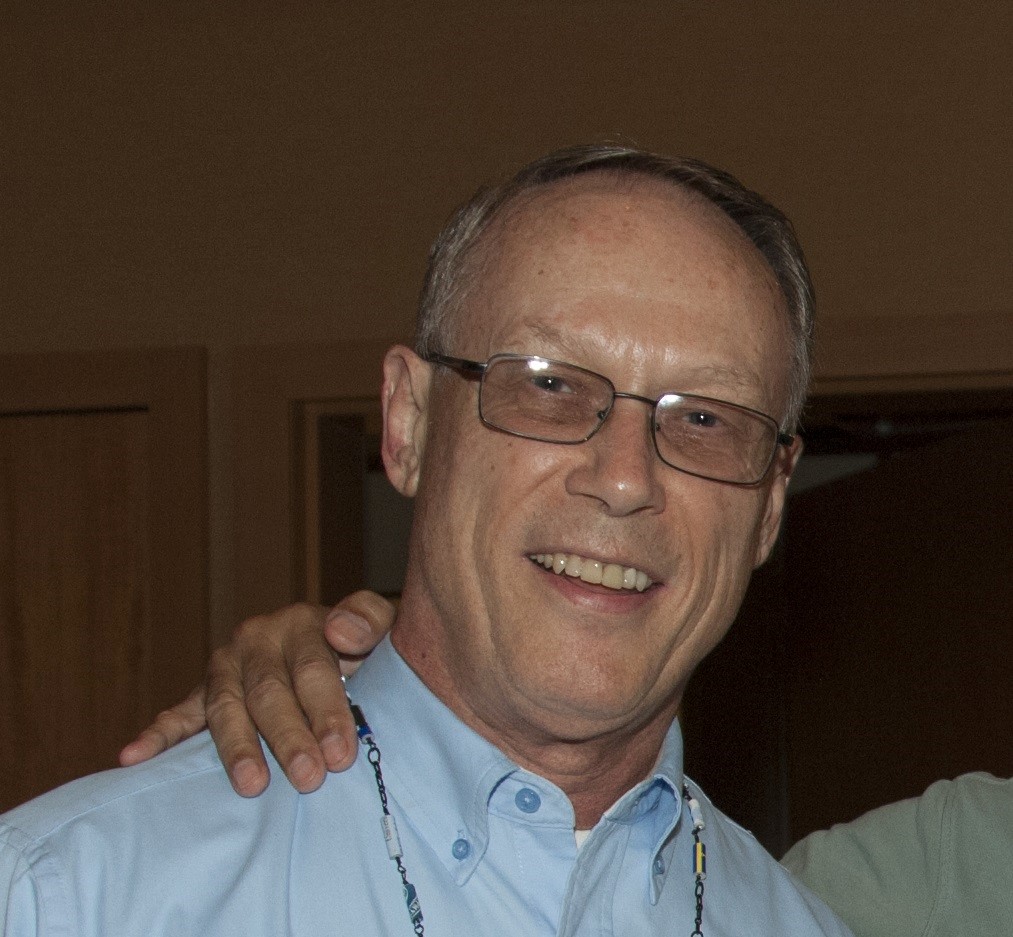
Howard Dickson, CHP
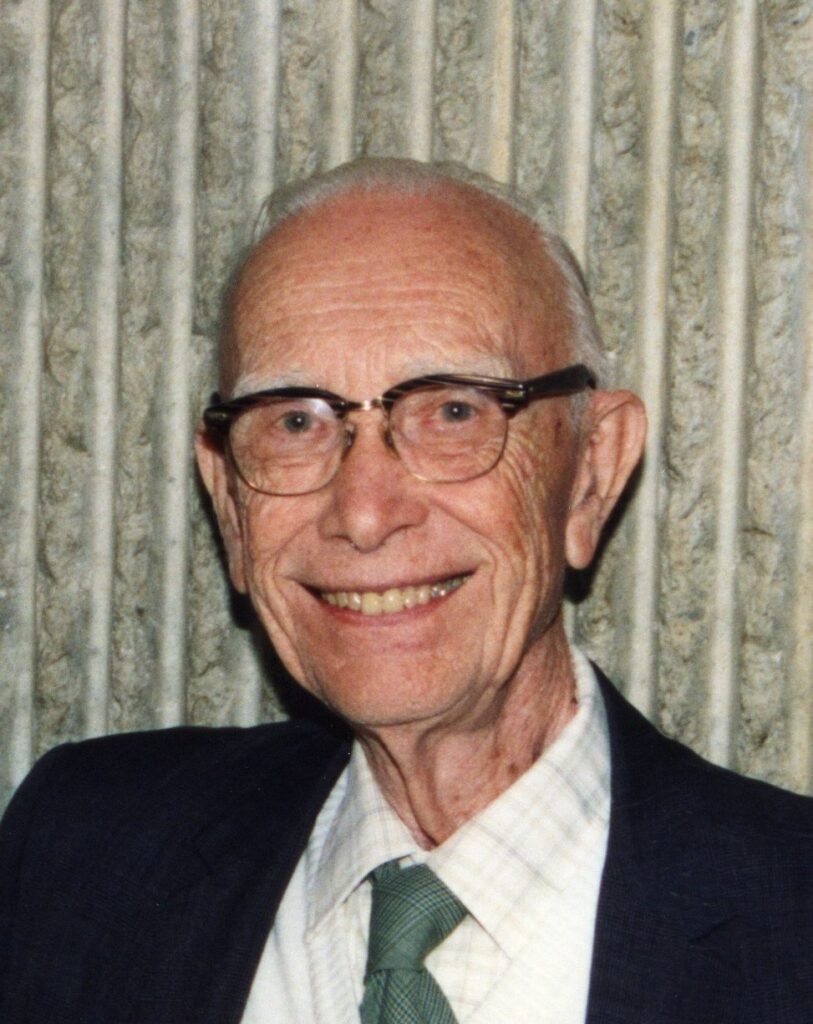
J Newell Stannard, CHP
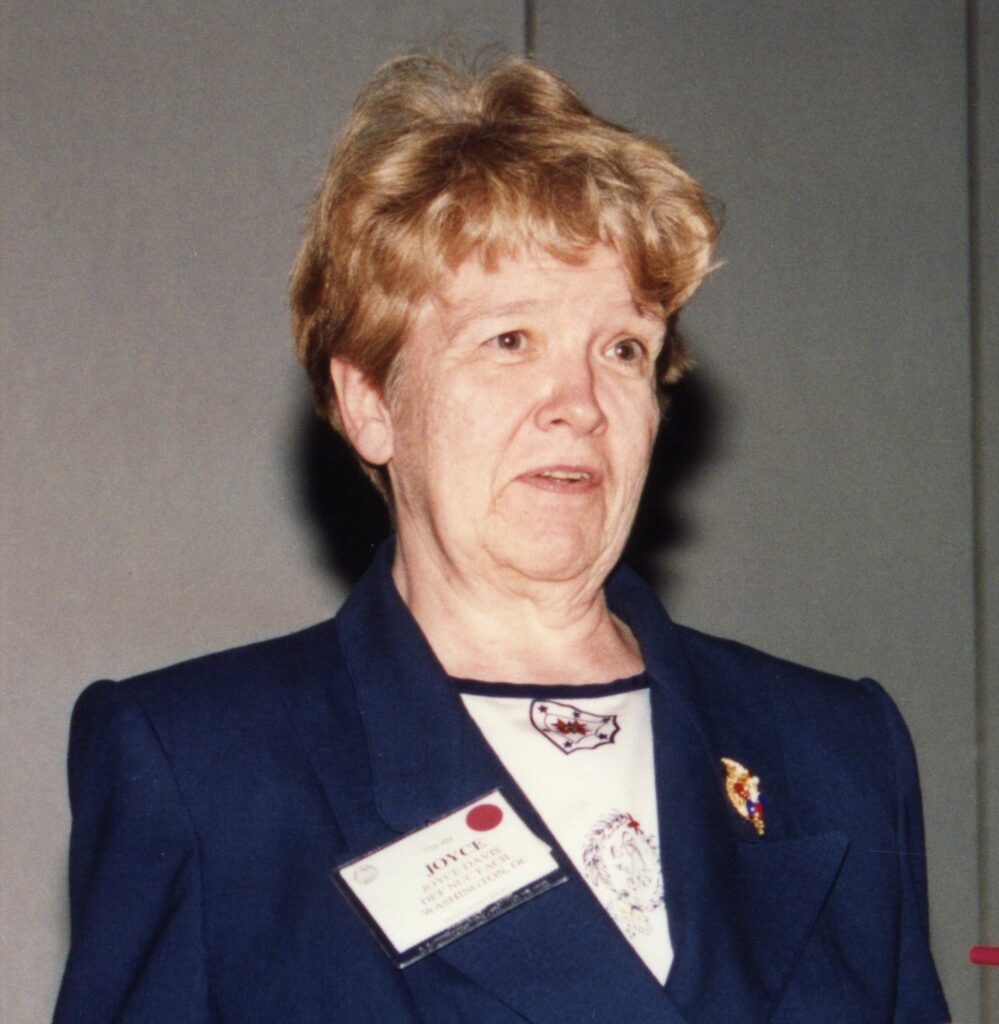
Joyce Davis, CHP
Class of 2024
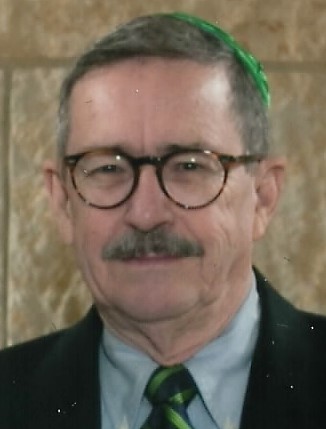
Edgar D. Bailey, CHP
Ed Bailey spent 17 years as the Chief of the California Radiologic Health Branch. In this position, he was responsible for the management of the State of California's radiation protection program, including the Agreement State Program for the licensing, inspection, and enforcement of the California laws and regulations for the possession, use, and disposal of radioactive materials. He also had California regulatory responsibility for the registration, inspection, and enforcement programs for x-ray machines and accelerators and the testing and state certification programs for doctors and technologists supervising and using these machines and for nuclear medicine technologists.
Prior to his work with the California Radiologic Health Branch, he worked for 19 years for the Texas Bureau of Radiation Control, where he held positions as the Director of the Division of Licensing, Registration, and Standards, the Director of Inspections and Enforcement, and as a Radioactive Materials License Reviewer.
Ed is a Certified Health Physicist. He served on the American Board of Health Physics, serving as Chair in 2004. He was President of the American Academy of Health Physics in 2014 and also served as Treasurer and as a Director. He has also been a member of Program Area Committee 2 (Operational Radiation Safety) of the National Council on Radiation Protection and Measurements.
Mr. Bailey earned an MS in Environmental Health Engineering and a BES (Nuclear Power Option) both from the University of Texas.
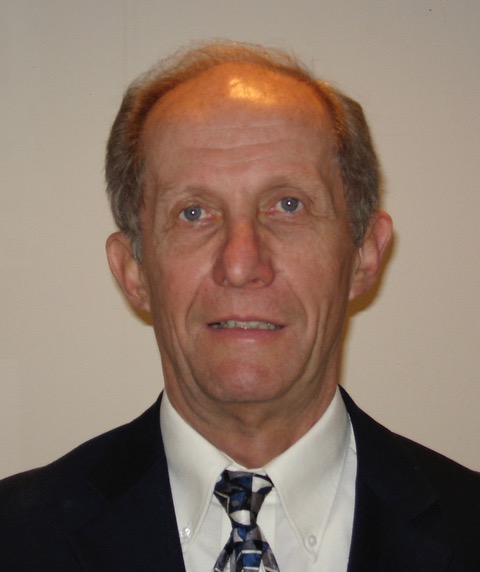
David S. Myers, CHP
David Myers received a BS in physics from Ripon College and an MPH in health physics from the University of Michigan under an AEC Fellowship. He was a health physicist at the Lawrence Livermore National Laboratory from 1965 to 2000 where he held various positions including Health Physics Group Leader and Radiation Safety Division Leader.
Mr. Myers is a Fellow of the Health Physics Society and certified by the American Board of Health Physics. He has served on the American Board of Health Physics and as a director of the American Academy of Health Physics. He was named a Fellow of the HPS in 1990.
David served on the National Council on Radiation Protection and Measurements from 1996 to 2013 and has served on NCRP Scientific Committee 46 (now Program Area Committee 2) on operational health physics since 1985. He served as chairman of PAC 2 from 2006 to 2013
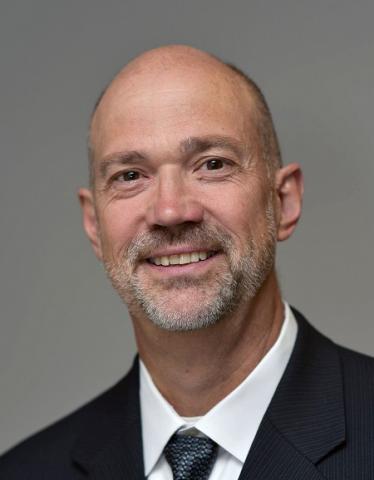
Charles A. Potter, CHP
The American Academy of Health Physics proudly recognizes Charles A. “Gus” Potter as a Distinguished Member in acknowledgment of his outstanding technical achievements, exemplary public service, and enduring leadership within the health physics profession.
Mr. Potter has made significant and wide-ranging contributions to the field, with over 25 years of service at Sandia National Laboratories. His work has positioned him as a global authority in internal dosimetry, risk assessment, and radiation effects modeling. His depth of knowledge and research impact are perhaps best illustrated by the rare distinction of serving as the sole author for an entire issue of the Health Physics Journal—an honor reserved for only the most accomplished experts in the discipline.
His career has been characterized by an unwavering commitment to national and international radiation safety. As a senior member of national nuclear crisis response teams and a delegate to the International Atomic Energy Agency on behalf of the U.S. National Nuclear Security Administration, Mr. Potter has demonstrated both technical mastery and a profound sense of responsibility in safeguarding public health and security.
Mr. Potter’s contributions to the American Academy of Health Physics, the American Board of Health Physics, and both Panels of Examinners reflect his deep commitment to professionalism and mentorship. He was Academy President in 2022, Board Chair in 2012, and Part 2 Panel Chair in 2007, and supported the professional community through education, committee service, and Society leadership. His recognition as a Distinguished Member of Staff at Sandia National Laboratories underscores both his technical influence and peer respect. He was honored with the ABHP McAdams Award in 2017, and the Joyce Davis Award in 2021. He was named a Fellow of the Health Physics Society in 2016.
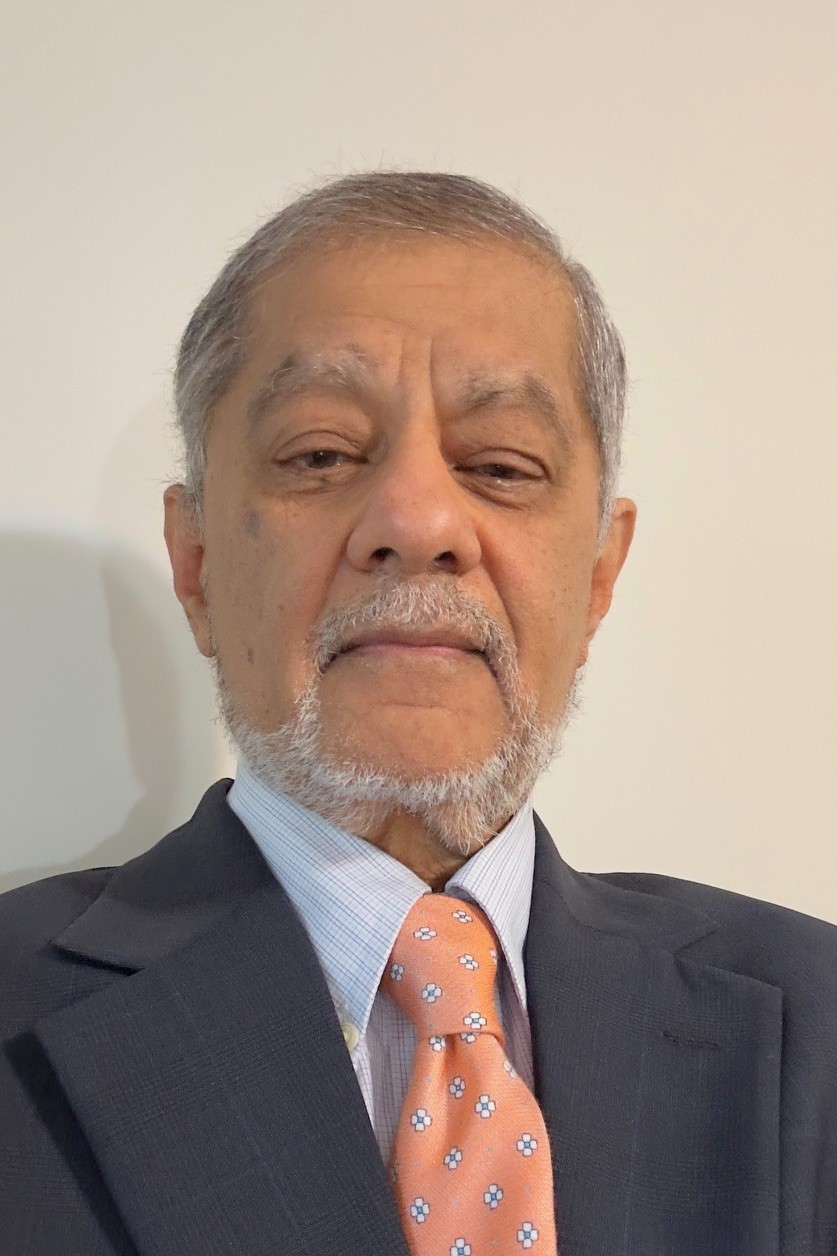
Govind Rao, CHP
Dr. Rao’s professional journey spans more than four decades of leadership in health physics, including pivotal roles at the U.S. Testing Company and Oak Ridge National Laboratory (ORNL). His expertise in internal and external dosimetry, combined with his scientific rigor, has supported radiation protection programs of national significance. As the leader of ORNL’s Dosimetry Services Group, he has been responsible for the development, administration, and continuous improvement of programs essential to occupational and environmental radiation safety.
A certified health physicist since 1990, Dr. Rao has dedicated more than 20 years to advancing certification standards and supporting the mission of the American Board of Health Physics. His service has included leadership as Chair of the Part 2 Panel of Examiners in 2006, membership on the Board starting in 2009 culminating as Chair in 2013, and a final 5-yr period on the Part 1 Panel of Examiners (2014-2018). His sustained service exemplifies the values of integrity, excellence, and professional stewardship.
Dr. Rao’s impact is also reflected in his scholarly contributions, including more than 45 publications and presentations that have helped guide best practices in health physics dosimetry and safety management. His commitment to continuous learning and mentoring has elevated standards across the profession.
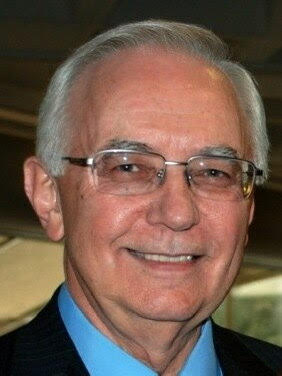
Rich Vetter, CHP
In the world of Health Physics, Rich Vetter has lived a life of involvement and service. After beginning his teaching career at South Dakota State University, his alma mater, he continued his teaching at Purdue University. From this start, he went on to become the Radiation Safety Officer and later Director of Safety at the Mayo Clinic in Rochester MN, as well as Professor of Biophysics in the Mayo Medical School.
Throughout his decades of service, Rich has been a member and later led the major organizations of health physics; the Health Physics Society (President, 1996-97),Board of Directors of the American Board of Health Physics (1998-2001), the American Academy of Health Physics (President, 2009), and the US delegation to the International Radiation Protection Association (IRPA)(Executive Council 1997-2000). He was Editor-in-Chief of the Health Physics Journal from 1988-1994, was named a HPS Fellow in 1997 and received the HPS Founders Award in 2003.
His list of publications, honors, and awards is as lengthy as it is impressive. To this list, the AAHP and ABHP now add Rich as a Distinguished Member of the Class of 2024.
The closing paragraph is reprinted from the Founders award:
“Rich is the consummate health physicist and the ideal role model for all who enter the profession after him. His professional achievements and his personal life show a well-defined pattern – everything that he touches he improves. He is an outstanding individual and a very accomplished professional.
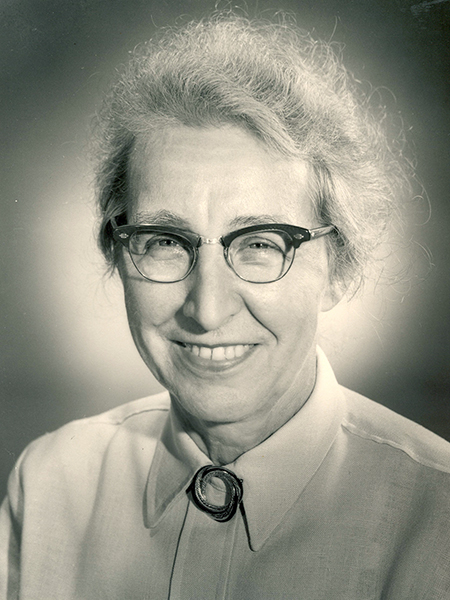
Elda Anderson, CHP
After extensive academic preparation in physics, Elda Anderson joined the Manhattan Project at Princeton and then at Los Alamos studying basic fission parameters. After the war, she stayed at Los Alamos until 1947, when she returned to teaching, but with a new interest in the health effects of radiation.
In 1949, she began a career in the Health Physics Division of the Oak Ridge National Laboratory in Tennessee. At Oak Ridge, she became the first chief of health physics education and training. In that role, she taught and mentored hundreds of health physicists through the US Atomic Energy Commission fellowship program in radiological physics. She also provided health physics training to countless military, government, and university officials as well as organizing international training courses.
Elda played a key role in the establishment of the Health Physics Society (HPS) in 1955, serving as secretary pro tem and then charter secretary and eventually as president of the Society from 1959 to 1960. She also was a member of the initial American Board of Health Physics until her death in 1961.
The year after her death, the HPS honored her dedication and memory by establishing an annual award in her name to recognize excellence and potential in young health physicists.
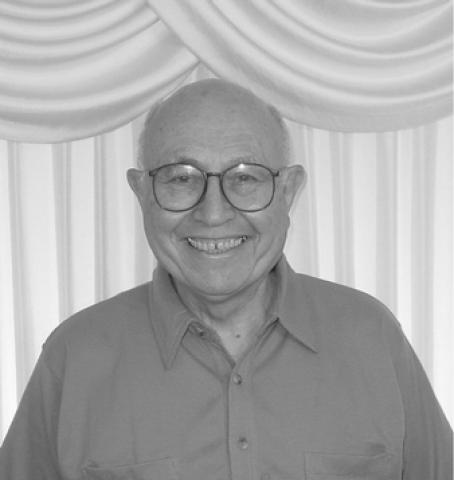
Herman Cember, CHP
Dr. Herman Cember was a towering figure in the field of health physics—an educator, author, researcher, and mentor whose influence shaped generations of health physicists. Over a career spanning more than five decades, Herman’s legacy was built not only on scientific accomplishment but also on an unwavering dedication to professional excellence and service.
After earning his B.S. in electrical engineering from City College of New York, Herman went on to receive both his M.S. and Ph.D. in biophysics from the University of Pittsburgh. His early research explored radiogenic lung cancer and heavy metal toxicology, contributing vital insight into health risks associated with radiation and environmental exposure.
Herman’s teaching career was both long and distinguished. From his early roles at the University of Pittsburgh and the University of Cincinnati to his many decades as a professor at Northwestern University, he was known for his warm and informal teaching style. He directed Northwestern’s academic programs in Health Physics and Industrial Hygiene and was deeply invested in the success of his students—urging them to pursue work they enjoyed for its own sake, not simply for financial reward. As he often said, “One third of your life will be spent at work—make it something you love.”
Herman authored more than seventy publications, but perhaps none more impactful than his textbook Introduction to Health Physics, widely adopted as a cornerstone of radiological health education and translated into both Russian and Chinese. His international engagement included serving as a technical expert for the International Labour Office in Geneva and as chair of the Health Physics Society’s summer school. He also taught many Professional Enrichment Program (PEP) courses, remaining a sought-after educator well into retirement.
Beyond his academic and scientific contributions, Herman provided distinguished service to the profession. He was President of the American Academy of Health Physics in 1999, served on the ABHP Panel of Examiners, and received the 1990 Distinguished Scientific Achievement Award from the Health Physics Society. In 2003, he was honored with the William McAdams Outstanding Service Award in recognition of his lifelong commitment to advancing the certification process and mentoring the next generation of professionals.
Dr. Cember’s impact is enduring—not only through his writings and research but also through the lives and careers of those he guided.
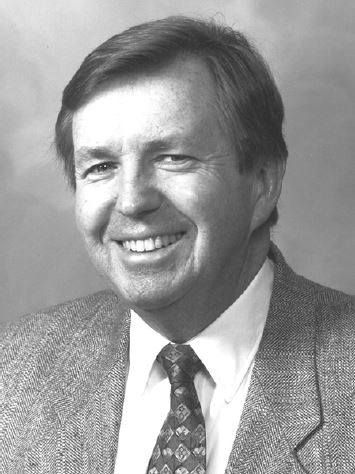
Otto Raabe, CHP
Otto was a professor of veterinary molecular biosciences and of civil and environmental engineering at the University of California, Davis (UCD). He taught and conducted scientific research in the fields of radiation biology and biophysics, airborne particle science, and inhalation toxicology.
Otto was a member of the American Industrial Hygiene Association, the Society of Toxicology, the American Association for Aerosol Research, the American Conference of Governmental Industrial Hygienists, the Radiation Research Society, the American Academy of Health Physics, the International Society for Aerosols in Medicine, and the American Association for the Advancement of Science.
He was a Certified Health Physicist and a 50-year member of the Health Physics Society (HPS). Otto was elected president of the HPS in 1998. He was elected a Fellow of the HPS in 1992 and awarded the HPS Distinguished Scientific Achievement Award in 1994. He served as President of the American Academy of Health Physics in 1989.

William McAdams, CHP
William McAdams is recognized for his foundational contributions to the establishment of health physics certification and his far-reaching influence on national and international radiation protection standards.
Mr. McAdams’ career began as a ballistics engineer with E.I. DuPont and Co. in 1940 and rapidly evolved into key leadership roles supporting the Manhattan Project, including service as a Research Physicist at the Metallurgical Laboratory of the University of Chicago. His post-war work included leadership in radiation protection at Hanford, where he served as Manager of Radiation Protection Services for General Electric under Herb Parker.
Throughout the 1950s and beyond, Mr. McAdams distinguished himself as a national and international leader in standardization, ultimately serving as corporate manager of Industry Standards for GE. He held influential positions on the Board of Directors of what is now ANSI, and as President of the International Electrotechnical Commission from 1980 to 1983. He also served for a decade on the National Council on Radiation Protection and Measurements (NCRP), from 1957 to 1967.
Mr. McAdams played a central role in launching the health physics certification process. As a member of the original HPS committee studying certification, he helped shape the concept of a formal certification body. Upon approval of the committee’s recommendations, he was appointed Chairman of the temporary American Board of Health Physics (ABHP) in 1958. When the ABHP was formally established by the HPS Board through a Bylaws change, Mr. McAdams was again appointed as its first official Chair. He also led the effort to secure the Board’s New York State charter.
A respected pioneer in health physics, Mr. McAdams will be remembered for his enduring contributions which laid the foundation for the profession’s commitment to excellence, integrity, and service.
Mr. McAdams passed away in 1995, but his legacy continues to guide the field of health physics and inspire new generations of Certified Health Physicists.
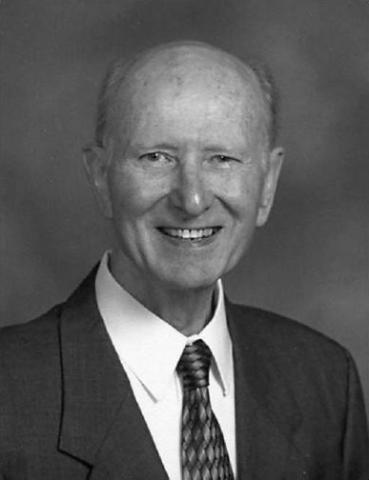
Dade W. Moeller, CHP
Dade W. Moeller was a giant in the field of Health Physics, a dedicated educator and mentor, and a true gentleman.
From rural Florida, Dade said that if not for World War II, he might not have gone to college. Enlisting in the Navy, his qualities were recognized and he was sent to school. Dade was granted a B.S. in Civil Engineering from Georgia Tech in 1948. He was awarded a M.S. in Sanitary Engineering from Georgia Tech in 1949. His Ph.D in Nuclear Engineering in 1957 was granted by North Carolina State.
His first job was as a uniformed officer of the US Public Health Service. This was followed by a faculty position at the Harvard School of Public Health. Finally, he retired from Harvard and founded his own Environmental Services company.
Regarding certification, he took and passed the second ABHP certification exam in December 1960. He was the first person invited to join the exam panel when new members were sought. He was panel chair in 1965, joined the Board of Health Physics in 1966 , and was ABHP Chair for 4 years (1967-1970), the longest term for anyone as chair.
Over the years, Dade received more honors and recognition for his work than can be listed here. Two of his significant honors were the Robley D Evans Commemorative Medal from the Health Physics Society (2003) and the William McAdams outstanding service award (2005) from the AAHP and ABHP. Additional details about his prolific career and honors can be found at the citations for these prestigious awards and in his obituary.
Dade was known for his mentoring of countless individuals over the years. Dade was also a prolific writer, having authored hundreds of articles in peer reviewed journals. His curriculum vitae (circa 2005) was 32 pages long. In the later years, Dade will also be remembered for his large easy chair in the company booth at the Health Physics Society meetings.
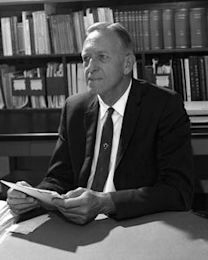
KZ Morgan, CHP
In 1943, Karl Z. (KZ) Morgan held the position of Director of Health Physics at the Oak Ridge National Laboratory. KZ was a big proponent of the formation of a professional society for the new field of health physics. He also stated that the new field required a scientific journal.
The first meeting of the fledgling Health Physics Society was held in 1955 and KZ was elected President for its first year. He devoted his energies to developing the health physics journal which was first published in 1958. He continued on as Editor-in -Chief for 17 years. He was also a member of the American Board of Health Physics from 1963-67.
KZ is honored for helping to provide a strong foundation for Health Physics as a scientific field.
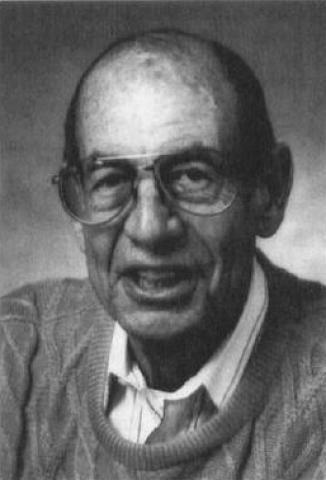
Wade Patterson, CHP
H. Wade Patterson is honored for his sustained leadership and profound influence on the development and integrity of the health physics certification process. With a career marked by thoughtful guidance, technical rigor, and a deep commitment to professional standards, Wade made enduring contributions to the American Board of Health Physics (ABHP) and to the broader health physics community.
Wade’s service to certification began in earnest in the late 1960s, when he became actively involved with the ABHP. He served as Vice Chair of the Board in 1969 and 1970, and then as Chair from 1971 through 1974—a period that saw important advancements in the program's structure and mission. He returned to certification leadership a few years later, serving as a member of the Panel of Examiners from 1977 to 1980. During his time on the Board, Wade played a key role in the ABHP’s advocacy for the establishment of the National Registry of Radiation Protection Technologists (NRRPT), expanding the scope and reach of professional recognition in radiation protection.
One of the lasting impacts of Wade’s tenure was the Board’s decision to phase out the oral examination as an option in the certification process, streamlining standards and improving consistency in candidate evaluation. His thoughtful leadership helped strengthen the credibility and professionalism of certification at a pivotal time in its development.
Beyond the Board, Wade was instrumental in shaping the foundation of the American Academy of Health Physics (AAHP). As Chair of the Nominating Committee during its formative period, he developed the Academy's first election method—ensuring each member’s vote carried equal weight and setting the tone for the Academy’s democratic governance. His principled approach and commitment to ethics have helped preserve the integrity of certification and inspired confidence among CHPs and the public alike.
Wade Patterson’s many years of dedicated service reflect a deep belief in the value of professionalism, education, and ethical practice. As a Certified Health Physicist and later an Emeritus CHP, he has been a model of integrity and quiet leadership—helping build the institutions and standards that continue to guide the profession today. It is with great respect and gratitude that we recognize H. Wade Patterson as a Distinguished Member of the American Academy of Health Physics.
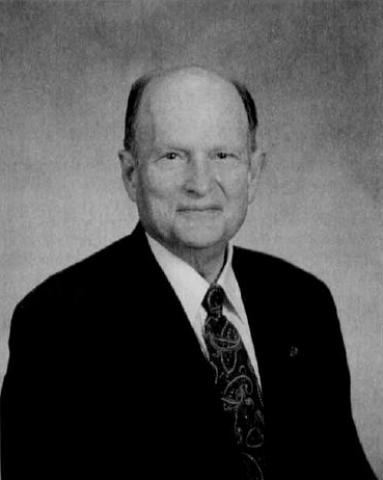
Bryce Rich, CHP
Bryce Rich is honored for his exemplary efforts in the early years of the health physics certification program and continued leadership in making the certification process viable in the long term.
Bryce became a certified health physicist in 1961 and soon afterwards became extremely active in the certification process. He was selected to serve on the Panel of Examiners in 1965 and served as Chair of the Panel during the period 1969 through 1973.
One year after leaving the Panel Chair position, Bryce was elected to the American Board of Health Physics (ABHP). He was elected the Board Chair in 1976. Bryce served as the Board Chair for three consecutive years (1976-1978).
Bryce's commitment to professional certification was not just limited to the ABHP. Because of his tried and proven management of the ABHP certification process, in 1982 Bryce was asked to serve on the Formation Board for the fledgling National Registry of Radiation Protection Technologists (NRRPT).
By 1982, the size and maturity of the certification program had prompted the ABHP to encourage greater participation by the growing body of CHPs. A new organization was proposed and its charter was defined and developed over the next three years, to a very large extent through Bryce's leadership and hard work. This organization's charter was to provide CHPs with more of a voice in the selection of Board Members and in the ongoing certification process. In 1986 this new organization, the American Academy of Health Physics, was in its inaugural year and it needed proven leadership and wisdom to ensure a successful premier. Without hesitation, the prevailing leadership of the time turned to the one leader who had given so much of his time, energy, and expertise to the certification process, and who also understood that the certification process serves the CHP, not the process itself. Bryce Rich was that leader; the first (Pro-Tem) President of the American Academy of Health Physics.
At the national level, Bryce is a Charter Member of the Health Physics Society and was its President for 1983-84.
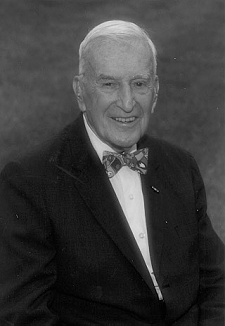
Lauriston Taylor, CHP
It is difficult to condense the reasons for honoring the late Lauriston Taylor into a brief citation. The man who was celebrated on his 100th birthday in 2002 as "Mr. Radiation Protection" was involved in the establishment of limits on radiation exposure and in the appropriate methodolody for taking measurements more than any other single individual.
After finally settling on a physics degree at Cornell, he began his career at the National Bureau of Standards (NBS) in the X-ray group in 1927. Within two years, he was leading the group and helped to found what became the International Radiation Protection Association (IRPA), then helped found what became the National Council on Radiation Protection and Measurements (NCRP). Taylor was NCRPs first President (until 1977).
Unlike many of the HP pioneers, Taylor did not work on the Manhattan Project in World War Two. Instead, he was working on something arguably more important to the war effort, the development of the proximity fuse. His long career, countless honors and numerous accomplishments were celebrated in June 2002, on the occasion of the 100th birthday. Numerous artuckes were published in both the Health Physics Journal and the Health Physics Newsletter (available to HPS members). For more information about Taylor, see his obituary.
Taylor led by example and tried to encourage more HPs(by example) to wear bow ties. In this, he was uncharacteristically unsuccessful.
Taylor was a member of the first gathering of the American Board of Health Physics and was Vice Chair for 1960-1962. By this action, he was a big part of the development of the certification process for Health Physicists. But that was not unusual as he was also a licensed plumber, electrician, and carpenter. The profession of Health Physics owes Lauriston Taylor a very large debt of gratitude.
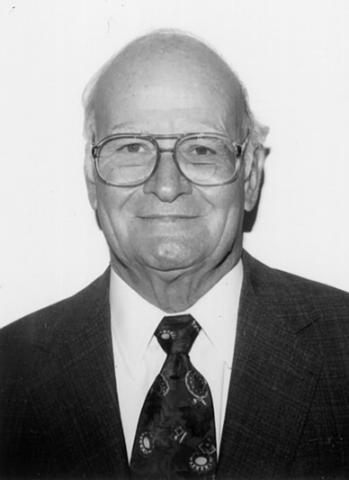
James E. Turner, CHP
James E. Turner exemplified the spirit of professional excellence and service that defines the health physics community. Over a remarkable career that spanned more than five decades, Jim made lasting contributions in research, education, international collaboration, and leadership. His impact on the field is still felt today—in the foundational texts he authored, the students he mentored, and the scientific advancements he helped drive.
Jim’s academic foundation was formidable: a degree in physics from Emory University, a master’s in industrial hygiene from Harvard, and a Ph.D. in physics from Vanderbilt. He went on to teach at Yale, serve with the Atomic Energy Commission, and ultimately joined Oak Ridge National Laboratory in 1962, where he became a Corporate Research Fellow and a widely respected leader in radiation physics and dosimetry. His research on radiation interactions, chemical dosimetry, and metal ion toxicity produced over 250 publications and several key textbooks—including Atoms, Radiation, and Radiation Protection, a trusted resource still in use today.
Jim also played a crucial role in professional leadership. He served as President of both the American Academy of Health Physics and the Health Physics Society, guiding strategic planning initiatives and strengthening the profession’s infrastructure. He was named a Fellow of the Health Physics Society in 1988 and received the Society’s Distinguished Scientific Achievement Award in 1992.
Beyond his technical achievements, Jim had a profound commitment to education and international engagement. He taught at the University of Tennessee as an adjunct professor well into retirement and shared his knowledge globally through his work with the World Health Organization, CERN, and institutions across India, Brazil, and Germany. He served on editorial boards, participated in critical international committees, and remained deeply engaged with the health physics community throughout his life.
Despite his extraordinary accomplishments, Jim was known for his humility, generosity, and kindness. He never stopped being a teacher—in the classroom, through his writing, or in his thoughtful mentorship of peers and students.
Class of 2023
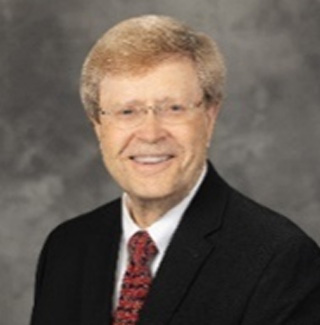
Frazier Bronson
Frazier Bronson is the Scientific Director in the Mirion Technologies Product Direction Group. He has a BS in Nuclear Engineering and a MS in Radiological Health. He has spent more than 10 Co-60 half-lives either measuring radioactivity, or designing equipment for others to help them do an even better job of measuring radioactivity. He received his ABHP Certification in 1972. After that he was on the inaugural Continuing Certification committee, has been Chairman of the American Board of Health Physics, and President of the American Academy of Health Physics. He has been honored to receive the Wm McAdams award and the Joyce Davis award.
He is a Fellow member of the Health Physics Society, and a former Director of the ANS Decommissioning Section. He is also quite involved in the Waste Management Symposium, as a previous Co-Chair of Track 3 on IL and LL Waste, the Session Organizer on Waste Characterization, and currently one the 2 PAC Board Representatives to the WM Board. He has long been tolerated by his wife, Helen Wong, their 3 children, and an even dozen grandchildren.
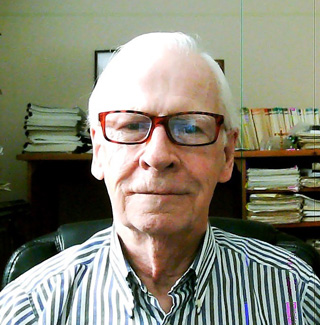
Dr. George Chabot
Many thanks to the American Academy of Health Physics for its kind and generous decision to select me for honorary membership as a “Distinguished Member” of the organization. I am presently retired from 30+ years of employment at the University of Massachusetts Lowell (UML) where I was a professor, teaching and carrying out research in the Physics and Radiological Sciences programs and, most appreciatively, with the privilege and pleasure of both past and present close associations with Drs. Ken Skrable and Clay French. I have been active in the HPS as a 54-year member of the national organization, long-term member and past President of the New England Chapter, and 20+ years of participation in the Ask the Experts program of the national HPS, having acted as editor for the Instrumentation and Radiation Basics topic areas for many of those years, a most enjoyable and rewarding experience occasioned by Genevieve Roessler’s initiation of the program and her request that I participate. My receipt of the HPS Founders Award in 2017 was a wonderful highlight during my retirement. I have enjoyed a long association with the AAHP and ABHP; I was certified by the Board in 1970, and recertified over many subsequent years, presently being an Emeritus member.
As an early Chairman of the Education and Certification Committee from the New England Chapter I enjoyed the rewarding experience of organizing several ABHP Certification Examination review courses and presenting numerous topical discussions in the courses. I enjoyed presenting PEP offerings on Preparation for Part 2 of the ABHP Certification Examination at several annual meetings of the HPS. I have had the past opportunity to act as an outside reviewer of Part 2 sections of some proposed ABHP certification exams. I have served as a past Secretary of the AAHP and have been pleased and encouraged to see its continuing success and the ability of it and the ABHP to adopt desirable changes over the years. There is no question that the achievement of certification is a personal and professional advantage to every successful candidate. Over many years of involvement in a wonderfully fulfilling occupation, my greatest enjoyment and satisfaction has come from being able to observe the success of many of our UML students who have gone on to achieve Board certification along with high levels of achievement and responsibility in the profession of Health Physics, including many who have held positions of high responsibility in the Academy and on the Board.
Thank you again to the Academy for this recognition!
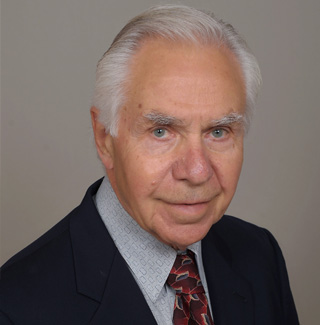
Kenneth Kase, Ph.D.
Kenneth Kase, Ph.D. served on the Board of Directors of the Health Physics Society (HPS) from 1989-1992 and 2002-2005 and as President of the HPS in 2003-2004. He was a member of the American Board of Health Physics Panel of Examiners from 1971-1974 and 1978-1980, and as Vice-Chairman in 1974. He was a member of the Board of Health Physics from 1981-1985 and Secretary/Treasurer from 1982-1984.
He served on the first Executive Committee of the American Academy of Health Physics in 1986-1987 and as Academy Pres-elect, President and Past Pres. from 1995-1997.
Dr. Kase is Honorary Vice-President of the National Council on Radiation Protection and Measurements. He was a member of the Council for 24 years, served as Sr. Vice-President for 9 years and for 12 years as Scientific Vice-President and Chair of Scientific Committee 46 for Operational Radiation Safety. He also was a member of Committee 4 of the International Commission on Radiation Protection from 1997-2001.
Dr. Kase completed his term as President of the International Radiation Protection Association (IRPA) in May 2012. He served as Vice-President from 2004-2008 and chaired the International Congress Program Committee for the 2000 International Congress on Radiation Protection (IRPA 10) in Hiroshima, Japan.
Ken began his career in Health Physics at Lawrence Livermore National Laboratory, CA in 1963 and moved to Stanford Linear Accelerator Center (SLAC) in 1969. In 1975 he received a PhD from Stanford University and was appointed to the faculty of Radiation Oncology at the Harvard Medical School. He was appointed Professor of Radiation Oncology at the University of Massachusetts Medical School in 1985. He returned to Stanford in 1992 as head of the Radiation Physics Department and was appointed an Associate Director of SLAC and Director of the Environment, Safety and Health Division in 1995. He retired from that post in 2001 and from SLAC in 2005. He is married to Grady and has two daughters and 6 grandchildren.
Throughout his career Dr. Kase has been active in research activities related to radiation physics and radiation protection, particularly in radiation measurements and the operation of particle accelerators. He has published over 80 papers in peer reviewed journals, co-authored one book and edited 3 others on radiation dosimetry.
He served on the Board of Directors of the American Association of Physicists in Medicine (AAPM) from 1984-1991, and as AAPM Treasurer from 1986-1991. Dr. Kase also has been an associate editor of Health Physics, Medical Physics and Radiation Research.
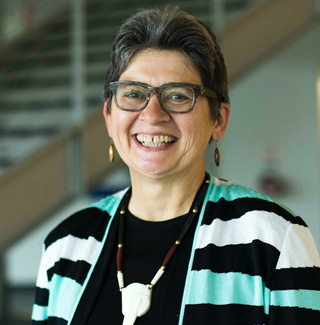
Kimberlee Jane Kearfott, ScD, CHP
Kim Kearfott is a tenured full Professor of Nuclear Engineering and Radiological Sciences at University of Michigan. Professor Kearfott received National Science Foundation Presidential Young Investigator, Society of Nuclear Medicine Tetalman, HPS Elda Anderson, ANS Women's Achievement, ANS Rockwell Lifetime Achievement awards. She is a Fellow of the HPS, and has served on the national board of directors of both the ANS and the HPS. She completed training in the first class of FEMA Radiological Operations Support Specialists (ROSS). Kim Kearfott has more than four decades of research and applied experience in radiation detection and radiological safety. She began her career in reactor safety analysis. She then became known for her early work on internal dose assessments for Positron Emission Tomography (PET) and for her designs of clinical PET facilities. She performed pioneering work in radon: discovering and mitigating the highest ever recorded domestic indoor radon air concentration. She has conducted projects in the personnel radiation monitoring, external dosimetry, and internal dose assessment.
Her current research is the design of radiation detection systems for environmental radiation, homeland security, and nuclear weapons verification. Dr. Kearfott maintains an interest in measurement systems of all types, including the detection of conventional explosives. She holds several patents on radiation detection methods and detectors. Dr. Kearfott has supervised 13 postdoctoral, 18 doctoral and 132 master’s projects/ She has supervised 264 undergradaute independent research projects. Efforts with students have resulted in more than 565 publications. An experienced teacher, Prof. Kearfott has presented more than 250 talks, 83 formal undergraduate and graduate courses, and 37 short courses. Her recent efforts are aimed at recruiting promising high school and first year college students into the radiation protection profession.
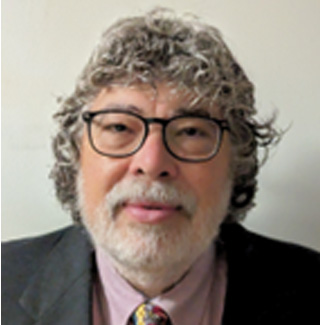
Kent Lambert
Kent Lambert received his bachelor’s degree from Texas A&M in Radiation Protection Engineering in 1978 and his master’s degree from Rutgers University in Radiation Sciences in 1987. After becoming ABHP certified in 1990, Dr. Ellen Hochheiser persuaded (or for those who knew her, coerced might be more believable) Kent to fill a vacancy on the ABHP Part I exam panel in 1997. This eventually led to appointment as the panel’s vice chair and chair (2002). Kent was later appointed to the ABHP (2007), where he served as its vice chair, parliamentarian, and chair (2011). Kent received the William McAdam Award in 2013. He was president of the AAHP in 2016. He also served as a “wise person” reviewer of the Part II exam in years 2013, 2014, 2015, 2021 and 2022.
Outside of the ABHP/AAHP, Kent co-chaired the International Radiation Protection Association (IRPA) Working Group on Certifications and Qualifications (2011 – 2016) and the Health Physics Society (HPS) Local Arrangements (Philadelphia 1999), chaired the HPS Rules and Nominating committees, and served on numerous other HPS committees. Mr. Lambert served on the HPS Board (1998-2004) both as director and treasurer and later as parliamentarian (2008-2010). Mr. Lambert was the Ask-The-Expert Topic Editor for Medical and Dental Patient Issues from 2012-2020. He became a fellow member of HPS in 2010. Kent served as president of the Delaware Valley Society for Radiation Safety in two separate terms and received its Meritorious Achievement Award in 2018. Mr. Lambert retired from Drexel University in 2020 as the Director of Regulatory Compliance in the Office of Research with responsibility for the Institutional Animal Care and Use Committee, Institutional Biosafety Committee and as the Radiation Safety Officer. He currently enjoys emeritus status with both the HPS and AAHP.
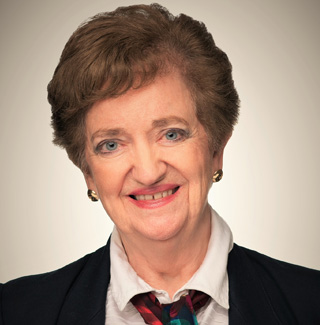
Ruth E. McBurney
Ruth McBurney is the Executive Director of the Conference of Radiation Control Program Directors (CRCPD). Prior to taking that position in January 2007, she had 29 years of service in radiation control programs in Texas and Arkansas. Ms. McBurney is currently serving as a Member of Council of the National Council on Radiation Protection and Measurements and is a past President of the Health Physics Society and a past Chair of the American Board of Health Physics. Ms. McBurney holds a Master of Science Degree in Radiation Sciences from the University of Arkansas for Medical Sciences and is a Diplomate of the American Board of Health Physics.
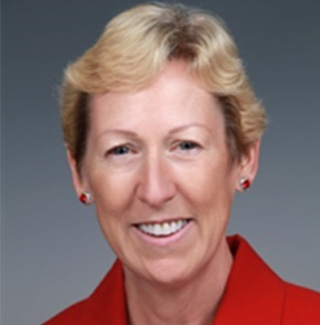
Kathryn H. Pryor, CHP
Kathy Pryor is currently an Emeritus member of the American Academy of Health Physics. She received her BS in Biology in 1979 and MS in Radiological Sciences in 1981, both from the University of Washington, and was certified by the ABHP in 1986. Ms. Pryor served on the Part II Panel of Examiners from 1991 through 1994, the last two years as the Vice Chair and Chair. She also served on the ABHP Board from 1998 to 2002, as Parliamentarian, Secretary, Vice Chair and Chair. Ms. Pryor was the Secretary of the Academy from 1993 to 1996 and President Elect, President and Past President from 2017 through 2020. Ms. Pryor was also awarded the William McAdams Outstanding Service Award by the ABHP in 2007. Ms. Pryor retired from the Pacific Northwest National Laboratory (PNNL) in Richland, Washington in 2018. Ms. Pryor is an Emeritus Fellow of the Health Physics Society (HPS) and served as President-Elect, President, Past President, Secretary and Board member of the HPS from 2003 to 2013. She has been a member of the National Council on Radiation Protection and Measurements since 2010, including a term on the Board of Directors and as Scientific Vice President of Program Area Committee 2 on Operational Radiation Safety.
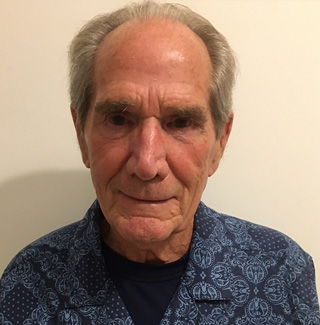
Dr. Kenneth W. Skrable
Education: B.S. from Moravian College in 1958, M.S. from Vanderbilt University (AEC Radiological Health Physics Fellow) in 1964; and PhD from Rutgers, the State University in 1969.
Experience: 1959- 1963: Health Physics Supervisor, Industrial Reactor Laboratories; 1963-1968: Lecturer in Radiation Science and Radiation Safety Officer, Rutgers the State University; 1968-1996: Professor of Radiological Sciences, Lowell Technological Institute and University of Lowell MA, which included development of academic programs and degrees through the PhD, six intensive short courses, including Certification Review for Health Physicists, research, and contracts with government and industry; 1996 - present: consultant to various government organizations and industries; and research.
Memberships: 1959 - present: Health Physics Society; American Academy of Health Physics; and National Council on Radiation Protection and Measurements, 1994.
Conference Papers: 91
Academic and Professional Publications: 44
Professional honors and awards: Certification in Health Physics,1969; Health Physics Society Fellow, 1986; Chairman of Health Physics Society Ad Hoc Committee on Occupational Radiation Exposure Standards 1983-1984; HPS Distinguished Scientific Achievement Award, 1989; Arthur F. Humm, Jr. Award, 1990; Williams McAdams Outstanding Service Award, 1993; and Robley D. Evans Commemorative Medal, 2002.
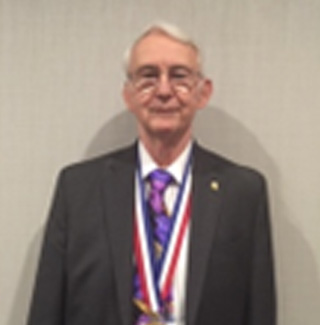
Dr. Richard E. Toohey, CHP
Dr. Toohey is being honored by AAHP/ABHP with the Distinguished Member award for his long-standing work and significant contributions in the field of health physics. He has always been a beacon in our profession and as a certified health physicist, has upheld the highest standards in the Health Physics profession.
Dr. Toohey received his Ph.D. in physics from the University of Cincinnati in 1973, followed by a postdoctoral position at Argonne National Laboratory to improve methods for the detection of inhaled transuranic radionuclides in vivo. Dr. Toohey joined the Health Physics Society in 1975 serving the Society over the course of 40 years, as Local Arrangements Chair, Board member, Secretary, Treasurer, and President. Dr. Toohey joined Oak Ridge Associated Universities (ORAU) as director of the Radiation Internal Dose Information Center (RIDIC) and assisted the Radiation Emergency Assistance Center and Training Site (REAC/TS), before retiring. While at ORAU, he was the first Program Manager for the Energy Employee Occupational Illness Compensation program. Dr. Toohey also served as Treasurer of the International Radiation Protection Association (IRPA) and a member of the IRPA Executive Council. Dr.
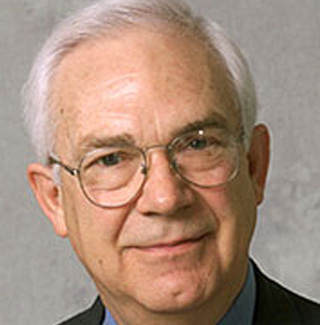
Dr. Paul L. Ziemer, Ph.D, CHP
Dr. Paul L. Ziemer is currently Professor Emeritus and former Head of the School of Health Sciences, Purdue University, West Lafayette, Indiana. From August 1990 to January 1993, Dr. Ziemer took a leave of absence from Purdue to accept an appointment by President George H.W. Bush as Assistant Secretary of Energy for Environment, Safety, and Health In that position, Dr. Ziemer was responsible for overseeing all radiological, environmental, safety, and health activities for the Department of Energy. In 1993 he returned to Purdue where he served as Head of the School of Health Sciences through the year 2000. At Purdue, Dr. Ziemer was administratively responsible for the teaching and research programs in health physics, industrial hygiene, medical physics, environmental health, and medical technology.
Dr. Ziemer’s career in health physics began after he completed his BS degree in physics from Wheaton College. He was admitted to the Atomic Energy Commission fellowship program at Vanderbilt University where he studied under Drs. Karl Z. Morgan and Elda E. Anderson. This included a health physics internship at the Oak Ridge National Laboratory. That led to the opportunity to remain as a health physicist at the Oak Ridge X-10 facility. Following that, he continued graduate studies and completed his Ph.D at Purdue University where he also served as radiation safety officer. He then received a faculty appointment and developed the first health physics graduate courses at Purdue.
Dr. Ziemer is a Certified Health Physicist and was the 1971 winner of the Elda Anderson Award. He has been President of the Health Physics Society and was the first elected President of the American Academy of Health Physics after its formation in 1986. The AAHP designated him as the McAdams Award winner in 2002. He has served as a member of the Board on Radiation Effects Research for the National Academy of Sciences. Dr. Ziemer has also served as the Chairman of the Scientific Advisory Council for the International Radioecology Laboratory in Ukraine, an organization conducting research in the area around the Chernobyl Nuclear Plant. From 2003 to 2007 he served on the Board of Directors of the Radiation Effects Research Foundation, the international institute in Japan that studies radiation effects on the survivors of the atomic bombs. Since 2001, Dr. Ziemer has been a member of the federal Advisory Board on Radiation and Worker Health. Initially appointed by President George W. Bush as Chair of the Advisory Board, he has continued as a member of this White House appointed Board under Presidents Obama, Trump, and Biden.
